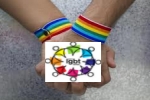This week Olympic diver Tom Daley has publicly come out the closet and has admitted being in a relationship with another man. His reasons are numerous, but above all, he wanted to live an honest life. He is only 19 and the decision to disclose his sexual orientation was bold.

Public issues always make for workplace queries. The Center for Talent Innovation, surveyed 983 lesbian, gay, bi-sexual and trans-sexual (LGBT) employees in the U.S. last year and the resultant report, The Power of Out 2.0, said the findings show that companies employing LGBT workers can benefit as much from an accepting office environment as the employees do.
In the workplace, there are safeguards to curb homophobic jibes. In the UK, The Equality Act 2010 enshrines protection for LGBT workers on the grounds of direct discrimination, indirect discrimination, harassment and victimisation at work, as well as anyone who is perceived to be or associates with LGBT workers.
Direct Discrimination may arise in a situation where someone is treated less favourably than another person because of his sexual orientation, perceived sexual orientation or the sexual orientation of someone with whom they associate.
Indirect discrimination may arise where a workplace provision, criteria or practice puts people of a particular sexual orientation at a particular disadvantage when compared to others of a different sexual orientation.
Harassment refers to unwanted language or conduct which has the purpose or effect either of violating someone’s dignity or creates an creating an intimidating, degrading, humiliating or offensive environment.
Victimisation arises where someone is treated less favourably because they have made a complaint of unlawful discrimination.
For most people, coming out at work is not easy. Despite having legal protection, it’s not easy to know how the company or colleagues will respond. Other workers often don’t know how to welcome a colleague who recently came out of the closet. How does a manager instil a culture which is tolerant of colourful and diverse employees?
Co-workers may feel a whole range of emotions from acceptance, shock, surprise, confusion, even anger. Here are some guidelines for managers.
- Don't assume that this is easier for your gay worker to tell you than it is for you hear it.
- It may be, equally it may not be.
- Get rid of any stereotypes you may have about LGBT workers. For example, if a female
- colleague tells you that she's a lesbian, don't automatically assume she's attracted to all other female workers.
- Ask the LGBT worker how he would prefer the information to be handled and what support you can provide at this stage.
- Take time to absorb the information. Your colleague is still the same person that you knew and liked yesterday. That fundamental hasn’t changed.
- Make sure that you adhere to your dignity at work policy i.e. you do not treat workers less favourably on the grounds of their sexual orientation and that your team do.
- Workers in civil partnerships have the same rights as married workers.
- Ensure that workplace banter is not inappropriate.
When a public figure like Tom Daley comes out it prompts much media discussion. He will find that despite some negative comments, there are many benefits. For example, coming out breaks down barriers to understanding and builds trusting working relationships. From one human being to another I wish him all the best and hope is relationship is happy and successful.
Russell HR Consulting provides expert knowledge in HR solutions, employment law training and HR tools and resources to businesses across the UK.
Subscribe to our free monthly HR newsletter. Russell HR Consulting employment law newsletters are emailed automatically to our ever-growing number of subscribers every month.
Latest blog posts
- Is There a Santa Clause?
06 / 12 / 2023
- Lend Us a Hand!
22 / 11 / 2023
- What Happens When There is a Clash in Protected Characteristics?
17 / 10 / 2023
- Encouraging a Healthy Workforce 2
21 / 09 / 2023
- Encouraging a Healthy Workforce
23 / 08 / 2023
- What a Disaster - (But We Have a Cunning Plan!)
20 / 07 / 2023
- It’s Time We Stiffened the Sinews
14 / 06 / 2023
- Why Is It So Important to Develop Emotional Resilience?
16 / 05 / 2023
- When is a discretionary bonus not discretionary?
20 / 04 / 2023
- Recovering Training Costs 15 / 03 / 2023
